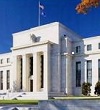-
Recent Posts
- Trump’s “Big Beautiful Bill” Is a Grotesque Giveaway to Fossil Fuel Billionaires While Adding $3.3 Trillion to Nation’s Debt
- Senator Chris Murphy Charges that Trump “Has Opened a Channel for Bribery”
- Congressman Casten: Trump’s Assault on the Rule of Law Is Causing Capital Flight Out of U.S. by Foreign Investors
- Trump’s Approval Rating Drops to 80-Year Low; IMF Says U.S. Tariffs Now Exceed the Highs During the Great Depression
- Nasdaq Has Lost More than 3,000 Points Since Trump’s First Full Day in Office in 2025; the Pain Has Barely Begun
- The Bond Crisis Last Week Was a Global No-Confidence Vote in U. S. President Donald Trump
- Trump’s Tariff Plan Guts $5 Trillion in Stock Value in Two Days; Senator Warren Calls for Emergency Action Before Markets Open on Monday
- Trump’s Attacks on Big Law, Universities, and the Media Have a Common Goal: Silence Dissent Against Authoritarian Rule
- Trump Administration Gives All Clear to Laundering Money through Shell Companies and Bribing Foreign Officials
- Four Megabanks on Wall Street Hold $3.2 Trillion in Uninsured Deposits – Which May Explain Senator Schumer’s Pivot to the GOP to Stop a Government Shutdown
- Here’s What Came Crashing Down Yesterday for Trump’s “Genius” Guy, Elon Musk: Tesla Stock, Access to Twitter (X), His Years of Secret Calls with Putin
- After Banning the Associated Press, Trump Is Now Targeting Specific Journalists That He Wants to See Fired
- Closely Watched Atlanta Fed Model Predicts Negative U.S. Growth in First Quarter
- Trump’s Gangster Diplomacy Makes Front Page Headlines Around the Globe
- Who Benefits Alongside Elon Musk If He Succeeds in Killing the CFPB: the Megabanks on Wall Street that Underwrite His Tesla Stock Offerings
- In Trump 1.0, the State Department Used Taxpayer Money to Publish a Book Elevating Elon Musk to a Superhero; It Was Funded by USAID, the Agency Musk Wants to Quickly Shut Down
- News Host Joy Reid Raises Threat of Trump Selling U.S. to Putin; Ten Days Later Her Show Is Cancelled
- Elon Musk’s DOGE Appears to Be Violating a Court Order; It Has Taken Down Hundreds of YouTube Videos that Educate Americans on How to Avoid Being Swindled
- Barron’s Releases Audio of Jamie Dimon Cursing Out His Workers at a Town Hall, as Dimon Plans to Dump Another One Million JPM Shares
- There’s One Federal Investigative Agency that Neither Trump nor Elon Musk Can Touch: It Just Opened an Investigation into DOGE
- Elon Musk’s Companies Were Under Investigation by Five Inspectors General When the Trump Administration Fired Them and Made Musk the Investigator
- Donald Trump Gives the Greenlight to Goldman Sachs and JPMorgan Chase to Return to Bribing Foreign Officials
- After Tech Geeks Built a Back Door to Loot Billions from FTX, Republicans Refuse to Investigate What Elon Musk’s Tech-Squad Did Inside the U.S. Treasury’s Payment System
- Former Prosecutor, Now U.S. Senator, Informs Tesla That CEO Musk May Be Violating Federal Law and to “Preserve All Records”
- Trump’s Hedge Fund Guy Is Now Overseeing the U.S. Treasury, IRS, OCC, U.S. Mint, FinCEN, F-SOC, and the Consumer Financial Protection Bureau
- As Elon Musk Begins Shutting Down Payments to Federal Contractors, a Strange Money Trail Emerges to His Operatives Inside the U.S. Treasury’s Payment System
- JPMorgan Chase Charged by Yet Another Internal Whistleblower with Cooking the Books
- We Asked Google’s AI Search Model, Gemini, Questions About the Fed and Wall Street Megabanks: It Got the Answers Dead Wrong
- With Trump and Melania’s Crypto Coins Likely to Raise Legal Challenges, Why Didn’t Trump Fire the SEC’s Inspector General in His Purge of IGs?
- Fossil Fuel Industry Could End Up Paying Tens of Billions for LA Wildfires and Deceiving the Public on Climate Change for Decades
- It’s Being Called the Biggest Grift by a President in U.S. History: Trump and First Lady Launch their Own Crypto Coins
- Trump Plans to Install a Fracking CEO to Head the Energy Department and Declare a National Emergency on Energy to Gain Vast Powers
- Fossil Fuel Money Played a Role in the Los Angeles Fires and the Push to Install Pete Hegseth as Secretary of Defense
- When It Comes to Wealth Retention in Retirement, Concrete May Be the New Gold
- Wall Street Watchdog Warns “Clock Is Ticking on a Coming Catastrophic Financial Crash”
- Wall Street Is Sending the Same Message to Americans on Fossil Fuel Financing that It Sent on Cigarettes: Drop Dead
- In a Six-Week Span, this Dark Pool with a Curious Past Traded 3.7 Billion Shares
- Wall Street’s Lobby Firm Hired Eugene Scalia of Gibson Dunn to Sue the Fed for Jamie Dimon
- Postmaster General Louis DeJoy Made $561,051 in Compensation in 2024, as Mail Costs Spiked and Delivery Deteriorated
- Fed Chair Jay Powell Sends a Bold Message to Trump and Tanks the Dow by 1123 Points
- The Head of Fixed Income at T. Rowe Price Makes the Scary Case for the 10-Year Treasury to Spike to 6 Percent
- $663 Billion in Cash Assets Have Gone Poof at the Largest U.S. Banks
- Donald Trump to Ring Bell at New York Stock Exchange Today as Hit List Posters Appear in Manhattan Targeting Wall Street CEOs
- Trump Has a Slush Fund to Prop Up the Dollar – Will He Use It to Prop Up Bitcoin Instead?
- A CEO Assassination; a Billionaire Heiress/NYPD Commissioner; a Secret Wall Street Spy Center – Here’s How They’re Connected
- Despite More than 1600 Tech Scientists Signing a Letter Calling Crypto a Sham, Trump Names a Crypto Cheerleader for SEC Chair
- The Fed Rings a Warning Bell: Hedge Funds and Life Insurers Are Reporting Historic Leverage
- Trump’s Nominee for FBI Director, Kash Patel, Has Businesses Financially Intertwined with Trump
- Donald Trump Is at Risk of Getting Named in a Fossil Fuels Conspiracy Lawsuit
- Trump Is Having Difficulty Getting a Lawyer to Accept the Nomination for SEC Chair: Here’s Why
Search Results for: rap sheet
Jamie Dimon Goes Missing from Earnings Call, After Dumping $183 Million of His JPMorgan Chase Stock Earlier this Year

By Pam Martens and Russ Martens: July 17, 2024 ~ We can’t remember a time when the Chairman and CEO of the largest, most complex and scandal-ridden bank in the United States, Jamie Dimon of JPMorgan Chase, was too busy to squeeze in an appearance at the company’s heavily-scrutinized quarterly earnings call with analysts. That happened last Friday. When something happens for the first time at a bank that has racked up five felony counts, has been doled out non-prosecution and deferred-prosecution agreements by the U.S. Department of Justice in a steady drumbeat since 2014, and spent most of last year in the headlines for a decade of sluicing tens of thousands of dollars per month in hard cash to the international sex trafficker of children, Jeffrey Epstein, it pays to sit up and pay attention. Reuters’ reporter John Foley also found it “unusual” that Dimon had missed the earnings call … Continue reading
The Fed Posts Historic Operating Losses As It Pays Out 5.40 Percent Interest to Banks

By Pam Martens and Russ Martens: June 26, 2024 ~ According to Federal Reserve data, for the first time in its history, the Fed has been losing money on a consistent monthly basis since September 28, 2022. As of the last reporting date of June 19, 2024, those losses add up to a cumulative $176 billion. As the chart above using Fed data shows, the losses thus far in 2024 have ranged from a monthly high of $11.076 billion in February to a low of $5.674 billion in May. These losses are separate and distinct from the unrealized losses the Fed is experiencing on the debt securities it holds on its balance sheet. It does not mark those losses to market since it intends to hold the securities to maturity and their principal is guaranteed at maturity by the U.S. government. The losses shown in the above chart are actual cash … Continue reading
Citigroup Gets Fined $79 Million Two Years After It Caused a $300 Billion Flash Crash in European Stock Markets

By Pam Martens and Russ Martens: May 22, 2024 ~ Two U.K. regulators, the Financial Conduct Authority (FCA) and the Prudential Regulation Authority (PRA), announced this morning that they have leveled fines totaling $78.5 million against Citigroup’s European trading arm, Citigroup Global Markets Ltd. (CGML). See here and here. The fines relate to a $300 billion flash crash in European stock markets on May 2, 2022. Citigroup is the parent of the fourth largest federally-insured bank in the United States, Citibank. During the 2008 financial crisis, Citigroup imploded and became a 99-cent stock because of its high-risk market activities. It received over $2.5 trillion in bailouts and cumulative loans – the largest bailouts in global banking history. The U.K. regulators have today put the blame for that May 2, 2022 flash crash on a trader on Citigroup Global Markets’ Delta One trading desk, who, according to the regulators’ scenario, entered a … Continue reading
After Weeks of Howling by MAGA Republicans for the Chair of the FDIC “to Resign,” a Democrat Delivers the Decisive Stab in the Back

By Pam Martens and Russ Martens: May 21, 2024 ~ Yesterday, at 10:08 a.m., Senator Sherrod Brown, a Democrat from Ohio and the Chair of the Senate Banking Committee, sent out a shocking emailed statement to the press indicating that Brown was “calling on the President to immediately nominate a new Chair who can lead the FDIC at this challenging time and for the Senate to act on that nomination without delay.” By 6:27 p.m. the Associated Press was reporting that Martin Gruenberg would step down as Chair of the FDIC and President Joe Biden would announce his nomination to replace him “soon.” The Brown statement was a gut punch to every engaged American and journalist who actually understands what’s at stake here. It was not only a back stab to Gruenberg, it was a back stab to Brown’s highly-respected colleague on the Senate Banking Committee, Senator Elizabeth Warren, who has … Continue reading
Wall Street’s Judge Shopping Continues: It’s Trying to Stop the FTC’s Ban on Worker Handcuffs Known as Non-Compete Agreements

By Pam Martens and Russ Martens: April 25, 2024 ~ Sullivan & Cromwell, the go-to law firm for Wall Street in the past, has become a case study in how not to manage one’s corporate reputation. (See Wall Street’s Go-To Law Firm, Sullivan & Cromwell, Got in Bed with Crypto; Now Its Reputation Is Being Hammered.) Apparently, having previously represented FTX fraudster, Sam Bankman-Fried, and then grabbing FTX’s bankruptcy proceeding and billing $180 million, is not enough shame for Sullivan & Cromwell to heap on its reputation. It is now listed as the Big Law firm that filed a federal lawsuit yesterday on behalf of the corporate front groups, the U.S. Chamber of Commerce, the Business Roundtable, and others, to stop the Federal Trade Commission’s (FTC’s) new rule banning non-compete agreements for most workers. (An 8-attorney law firm in Texas, Potter Minton, is also listed on the filing for the plaintiffs.) Sullivan … Continue reading
Billionaire-Owned Media Has Gone Full Throttle to Save Fellow Billionaire, Jamie Dimon

By Pam Martens and Russ Martens: April 22, 2024 ~ The Washington Post Editorial Board appears to have sipped the same kool aid as Bloomberg News. As we’ve frequently reported in the past, Bloomberg News has spent the better part of the last decade attempting to brainwash the public into believing that the head of JPMorgan Chase, Jamie Dimon, is a respected statesman of Wall Street. (See here, here, and here.) In reality, JPMorgan Chase has admitted to an unprecedented five criminal felony counts with Dimon at the helm and paid fines in the tens of billions of dollars for an additional crime wave that rivals an organized crime family. Billionaire Michael Bloomberg, the former Mayor of New York, is the majority owner of Bloomberg LP, the owner of Bloomberg News. In 2016, Michael Bloomberg even co-authored an opinion piece with Dimon. The same year, the New York Post reported that JPMorgan Chase was … Continue reading
Wall Street Mega Banks Have Created a Circular Firing Squad with Credit Derivatives and Capital Relief Trades – with the Fed’s Blessing

By Pam Martens and Russ Martens: March 6, 2024 ~ On June 11, 2015, the Office of Financial Research (OFR) released a sobering report on how banks were reducing their requirements to hold adequate capital against potential losses by engaging in non-transparent “capital relief trades” with potentially questionable counterparties. The OFR researchers summarized the problem as follows: “Capital relief transactions may have benefits to banks. But, even if real risk transfer is involved, these transactions can pose financial stability concerns by increasing interconnectedness, transforming credit risk into counterparty risk, and obscuring capital adequacy to investors and counterparties. And while bank supervisors have extensive data about banks, they may have less information about the nonbanks who are selling credit risk to those banks and ultimately bearing the risk of loss.” The Office of Financial Research was created under the Dodd-Frank financial reform legislation of 2010 to make sure that Wall Street mega banks … Continue reading
New York Community Bancorp Was JPMorgan’s Top Regional Bank Pick for 2024; It’s Lost 73 Percent Y-T-D and Had Its Deposit Rating Downgraded to Junk

By Pam Martens and Russ Martens: March 5, 2024 ~ New York Community Bancorp’s tumultuous share price descent began on January 31 when the bank filed an 8K form with the SEC indicating a $260 million net income loss in the fourth quarter; a dividend cut from 17 cents to 5 cents; and a $552 million provision for credit losses on commercial real estate. (Year-to-date, the company’s share price has lost 73 percent of its market value. Yesterday, its shares closed at $2.73, down 23 percent from the prior trading session on Friday, when the shares had lost 26 percent. ) Somehow, JPMorgan banking analyst Steven Alexopoulos was able to swat the gargantuan warning signs of January 31 away like a pesky gnat on an otherwise perfect day. On February 1, Alexopoulos penned a missive recommending that investors “take advantage of this valuation and accumulate shares on this weakness.” To drive home his … Continue reading
Watchdog, Better Markets, Investigates the Bank that Has Lost 65 Percent of Its Market Value in Two Months and Was Downgraded to Junk by Moody’s

By Pam Martens and Russ Martens: March 4, 2024 ~ The widely respected banking and Wall Street watchdog, Better Markets, has a new report out on the latest teetering bank holding company, New York Community Bancorp (ticker NYCB). The title of the well-researched report pretty much says it all: “A Frankenstein Monster Federal Regulators Created.” NYCB has lost 65 percent of its stock market value year-to-date and was downgraded to a junk credit rating by Moody’s after the stock market closed on February 6. Moody’s wrote in its downgrade that a third of the bank’s deposits lack FDIC insurance. NYCB’s rapid share price descent began on January 31 when the bank filed an 8K form with the SEC indicating a $260 million net income loss in the fourth quarter; a dividend cut from 17 cents to 5 cents; and a $552 million provision for credit losses on commercial real estate – an area of … Continue reading
Bank Fraud Enters a New Era: Bank-to-Bank Wire Transfers Loot Customers

By Pam Martens and Russ Martens: February 2, 2024 ~ Yesterday, the U.S. Senate Banking Committee held a hearing under the title: “Examining Scams and Fraud in the Banking System and Their Impact on Consumers.” Let that title sink in for a moment – “Scams and Fraud,” “Banking System.” That’s the federally-insured banking system of the United States of America in which millions of Americans have entrusted their life savings because they believe it to be the safest place to put their money. Indeed, federally-insured banks had been the safest place to put money since 1933, when the Glass-Steagall Act was signed into law, until the repeal of the Act by the Wall Street friendly Bill Clinton administration in 1999. Thanks to that egregious repeal of critical consumer protection legislation, the following has happened: Trading casinos on Wall Street have been allowed to merge with federally-insured banks with a porous wall of … Continue reading

